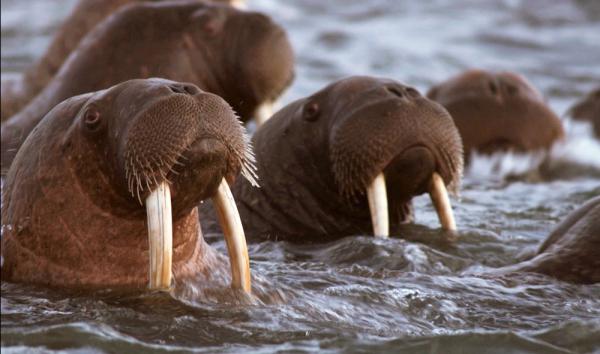
Quest for Survival: Photos of Incredible Animal Migrations
Feast or Famine: Mexico

Long thought of as a terror of the shallowest waters, the great white shark is really one of the world's greatest migrants. Its movements cover thousands of miles of open ocean each year from Hawaii to northern Mexico to reach an abundant feast 150 miles off the coast of Guadalupe, Mexico.
Born to Move: Azores Islands, Portugal

Sperm whales may travel more than a million miles in their lifetime. They are constantly on the move from ocean to ocean, an underwater force of nature in their size and power. Traveling solo for most of their lives, the giant males make their way to places like the Azores every year, connecting with others until they reach their destination, where females await for reunion and renewal.
Need to Breed: Falkland Islands, South Atlantic Ocean

The red-eyed, yellow-browed rockhopper penguin parents go out to sea and back every day to feed, then make the steep vertical climb up a sheer rock cliff where their very hungry young are protected from polar winds. After three months, the penguins hop down off the cliffs and into the water again for another season, while the young, fledgling albatrosses test out their wings and take flight, sometimes not returning to shore for a decade, and only then to breed and can scale near-vertical cliff walls to reach their nest sites.
Race to Survive

Nearly 40 feet long and weighing up to 20 tons, the mysterious whale shark is the largest fish in the sea. Ironically, its survival depends on some of the tiniest creatures. Whale sharks feed on plankton and also congregate during snapper spawning in order to feed on the fish eggs.
Feast or Famine: Upper Mississippi River Valley

The white pelican breeds in North America and migrates south in the winter to coasts as far as Central America in flocks of up to 180 individuals.
Race to Survive

Pacific walrus travel according to the movement of the ice. As the ice expands in the winter, they move south. As it breaks up and retreats in the spring and summer, they move north again.
Feast or Famine: Jellyfish Lake, Palau

Five million jellyfish glide across the lake's surface each day to follow the sun streaming eastward in the morning and westward in the afternoon in a stunning daily migration. At night, the jellyfish sink down 45 feet to absorb nutrient-rich bacteria, which the algae in their bodies require to survive.
Sign up for the Live Science daily newsletter now
Get the world’s most fascinating discoveries delivered straight to your inbox.











